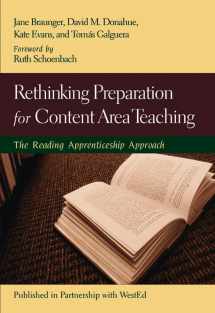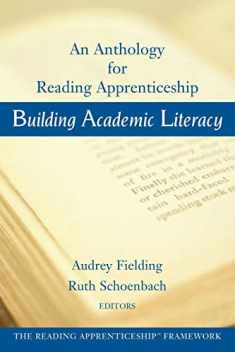
Rethinking Preparation For Content Area Teaching: The Reading Apprenticeship Approach
Book details
Summary
Description
The Reading Apprenticeship (RA) framework has received national recognition as an effective, research-based instructional approach that supports all students in successfully engaging with and learning from academic texts. First introduced in Reading for Understanding by Ruth Schoenbach et al., the approach is based on a program with a proven record of success in boosting the reading levels of urban high school students. Emphasizing social, personal, cognitive, and knowledge-building tools, the Reading Apprenticeship approach can be useful to teachers in any content area classroom. In Rethinking Preparation for Content Area Teaching, Jane Braunger and her co-authors make the case for incorporating the Reading Apprenticeship instructional model into secondary teacher preparation programs. Arguing that teacher education programs need to foster a broader understanding of adolescent literacy, especially if teachers are to help their students read in discipline-specific ways, the authors show how RA can serve to strengthen content-based instruction, how elements of the model can be embedded in teacher preparation curricula, and what types of course activities enable new teachers to understand and practice this approach.
?Finally, a book to help teacher educators who are called upon to teach the course ?Reading in the Content Areas.? In reading this book, I felt I had struck the proverbial goldmine: terrific course projects that will model for pre-service and in-service teachers precisely the kinds of metacognitive and discipline-based strategies that will be engaging and effective for their future students.?
--Linda Miller Cleary, professor of English education, Morse Alumni Professor of Distinguished Teaching, University of Minnesota, Duluth
?Finally, a book on content area literacy with a bigger vision concerning what it means for adolescents to read in the disciplines and how teachers can support such reading.?
--Stephen B. Kucer, associate professor of language and literacy education, Division of Curriculum and Teaching, Fordham University-Lincoln Center
?Braunger and colleagues offer a set of practices for engaging preservice teachers in learning how to use literacy in content teaching. Their approach is a vast improvement over former models of content-area literacy teacher education. The book is thick with resources, strategies, and reflective practices, and I look forward to using it as a resource for my own teacher education and professional development practices in large urban middle schools and high schools.?
--Elizabeth Birr Moje, Arthur F. Thurnau Professor Educational Studies, University of Michigan
?Unique in content area texts, the instructional strategies depicted in this work are grounded in a coherent theoretical frame and presented in real-life classroom complexities. I see many ways of using and adapting the assignments and classroom practices in my own preservice and graduate courses.?
--Jayne DeLawter, professor of reading and language education, Sonoma State University
?It is refreshing to read a book geared for teaching preservice and practicing teachers that respects the knowledge they bring to the classroom and builds upon their abilities to take critical and inquiring stances on content area literacy.?
--Robert Anthony Fecho, associate professor of teacher education, University of Georgia


We would LOVE it if you could help us and other readers by reviewing the book
Book review




